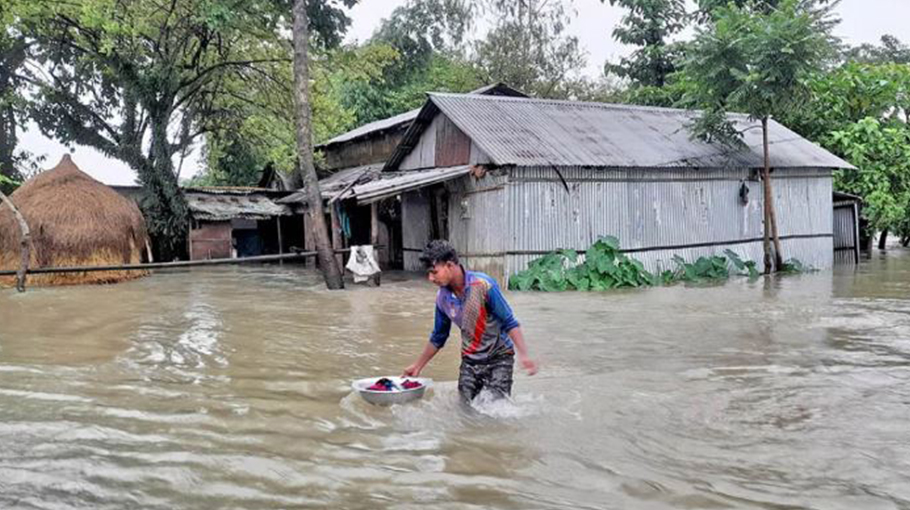Plights linger as water receding in N-dists

Thousands of people living in low-lying areas of several northern districts have been affected by flooding after adjoining rivers overflowed their banks.
The onrush of water from upstream contributed to the swelling of the Jamuna, Teesta, Dharla, and Dudhkumar rivers, said officials of the Water Development Board (WDB).
Although the floodwater has already started receding in these areas, vast areas of croplands and grazing fields remain submerged.
However, experts say the flood situation won't last long due to the less-than-usual rainfall in the greater Ganges-Brahmaputra-Meghna basin.
A bulletin of the Bangladesh Meteorological Department (BMD) predicted short-term flooding in the country's northern, north-eastern, and south-eastern regions in August due to heavy monsoon rainfall.
In Sirajganj, around 50 char and vast low-lying areas in Sadar, Chowhali, Kazipur, Shahjadpur, and Belkuchi upazilas have been inundated. The Jamuna has been swelling for the past week, however, it is still flowing below the danger level, said Ranajit Kumar, sub-divisional engineer of the WDB in Sirajganj.
Torrential downpours in the upper catchment Indian state of Assam contributed to the rise in the water level of Jamuna, he added.
However, the WDB official said the water level in the Jamuna was already falling and there was no chance of a long-term flood this time.
The water level in the Jamuna has been fluctuating for one and a half months. "Our croplands have been underwater for around one month. We don't have any work. It has become difficult for us to survive," said Abu Obaida, a resident of Koyra village in Sadar upazila.
In Bogura, with low-lying areas of Sariakandi and Sonatala being inundated, people there are facing a severe crisis of cattle feed and grazing lands.
Rafikul Islam, 50, of Biotana char under Sariakandi upazila, said, "Our village has remained flooded for a month. Although water has yet to enter our house, we are struggling to keep our farm animals alive as grazing lands and crop fields remain underwater."
Nazmul Haque, the executive engineer of Bogura WDB, said, "The Jamuna is still below the danger level, and the floodwater is receding. But the water level may rise again next week."
In Nilphamari, the Teesta crossed the danger mark on August 14, leaving vast tracts of lowland inundated and over 20,000 people marooned.
But the water level has declined, and it was flowing 49cm below the danger mark at the Dalia point yesterday, said Rashedin Mawla, sub-divisional engineer of Nilphamari WDB.
In Kurigram and Lalmonirhat, the Teesta, Dharla, and Dudhkumar started swelling last week, but the floodwater started receding after three days, said Abdullah Al Mamun, executive engineer of Kurigram WDB.
Nagen Chandra Barman, 65, a farmer from Rajpur village under Lalmonirhat Sadar upazila, said, "My home and croplands were inundated as the river swelled and overflowed its banks. Many people left their homes to take shelter on roads and other elevated grounds."



